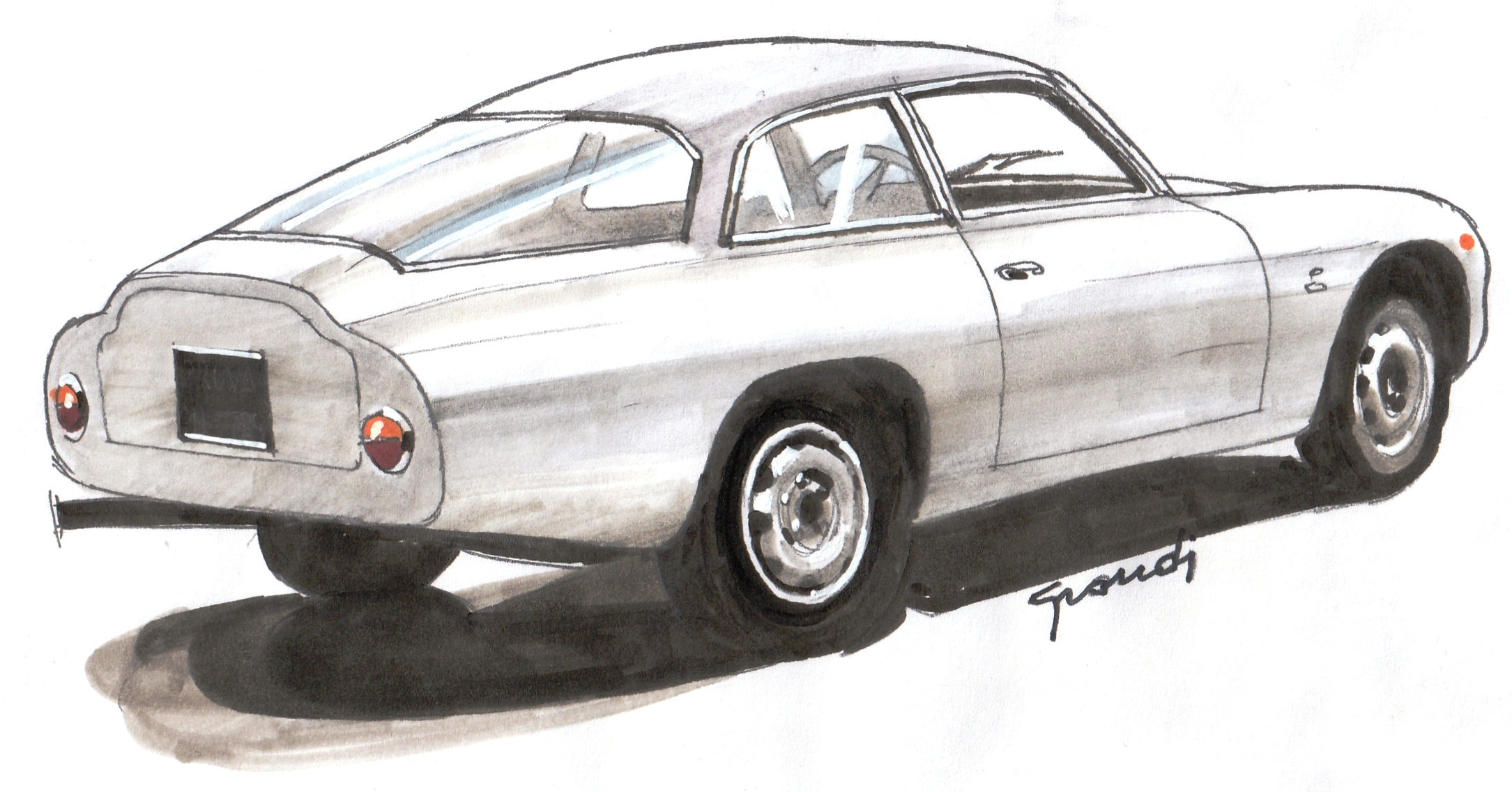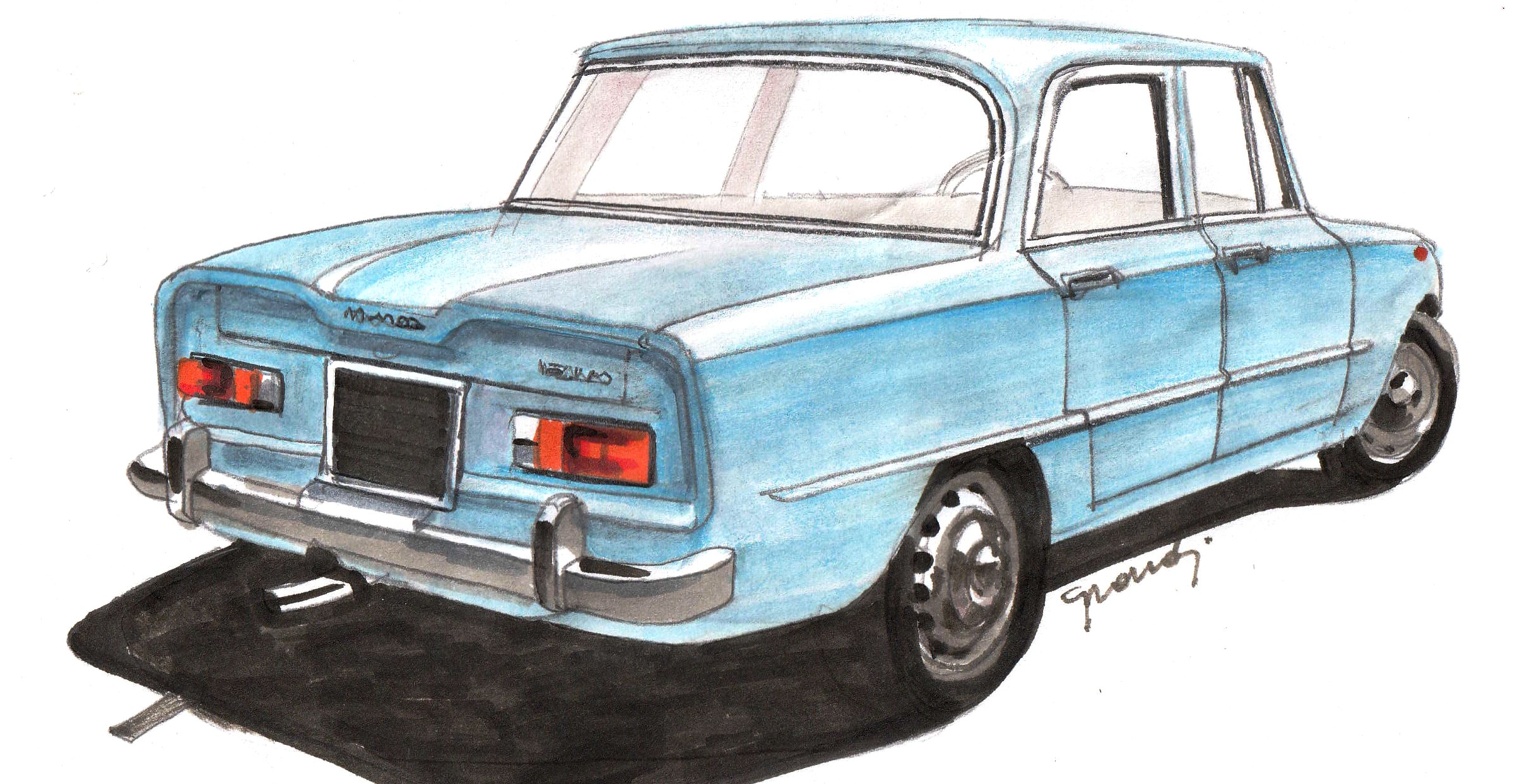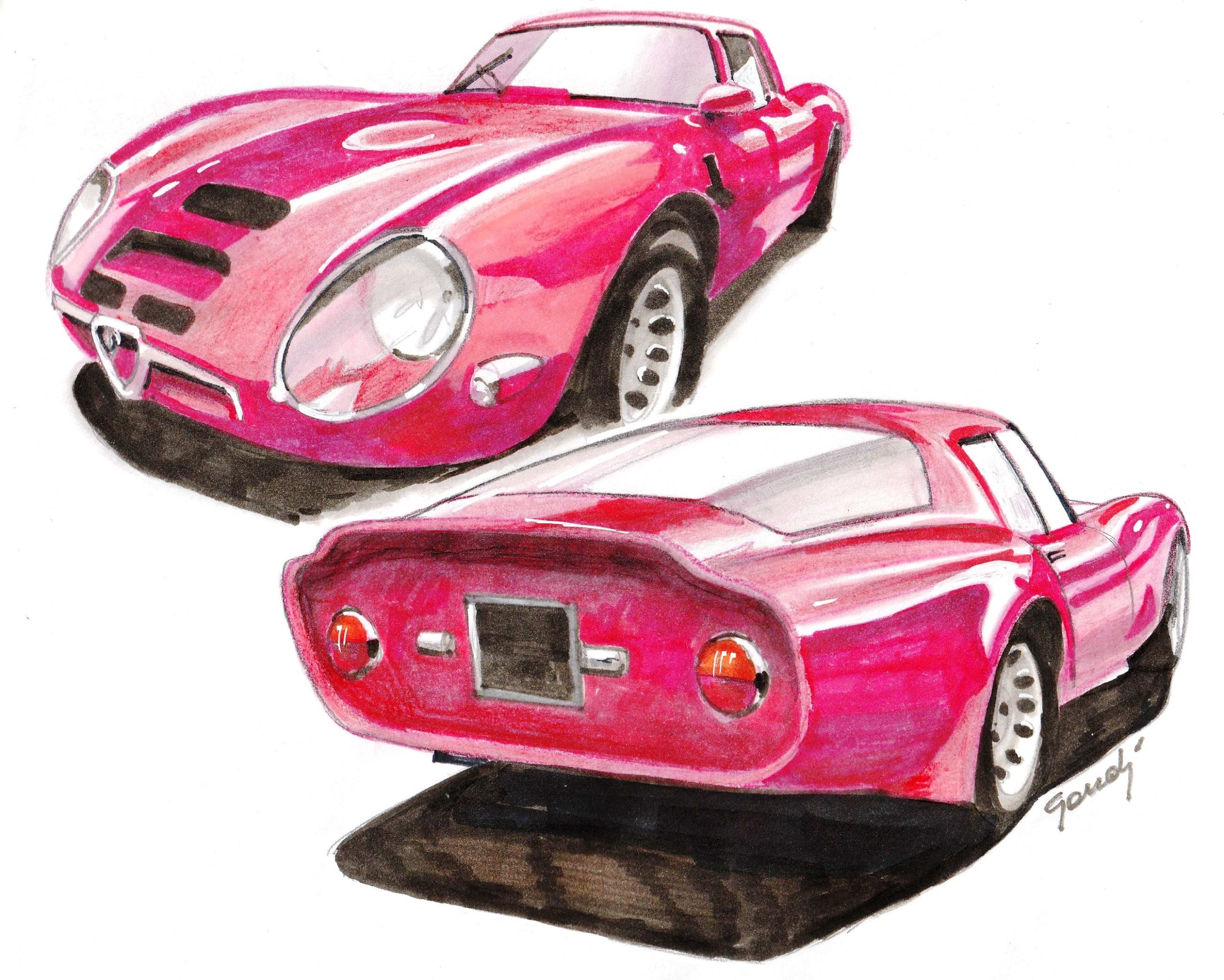How to cut a tail
With the valuable support of Prof. Massimo Grandi’s depth of knowledge and illustrative talent
Photo credit: Massimo Grandi
“The Weapon of Victory” is how the magazine Auto Italiana celebrated the newly-created Alfa Romeo Giulietta SZ Coda Tronca in March 1962, a car created from experimental trials as well as “shape and function” needs, which are the peculiar traits of Zagato’s DNA. The Alfa Romeo SZ Coda Tonda (Rounded tail) was the starting point of the development of the Alfa SZ Coda Tronca (“Kamm tail”).

While it’s true that the Coda Tonda was easily dominating the 1300 GT classes, it is also true that the fast and light Lotus Elites were the hands-down winners in every other important international race. That was a problem for Alfa Romeo, as big car manufactures at the time were using race wins as a powerful marketing tool. You won on Sunday so that you could out on Monday. That was Alfa Romeo’s strategy and it worked pretty well. For this reason, they had to create a completely new car. Elio Zagato, driven by his visionary spirit and working together with the Polytechnic of Milan, Alfa Romeo and excellent testers such as Conrero and Facetti, started a technical analysis aimed at the evolution of the SZ Coda Tonda. After various long and intense studies, they chose to focus their attention on the research on aerodynamics done by Prof. W. Kamm in the 30s. According to Kamm, a highly extended shape increases aerodynamic efficiency and, therefore, the maximum speed of a car. Elio Zagato, assisted during the design phase by a young Ercole Spada, modified a Giulietta SZ Coda Tonda, stretching the “nose” of the car and cutting the tail. They started with the front section, taking inspiration from the work applied to the Maserati 450 S built for Sir Stirling Moss a few years earlier.

As the newly modified car had a long and unusual body, which could compromise handling to the detriment of maximum speed, they also decided to cut the tail. When Elio Zagato, sitting next to Ercole Spada, tested the modified newly car on the highway between Milan and Bergamo, the result was simply incredible: an increase of 20 km/h in maximum speed. Ercole Spada, holding the chronometer in his hands, at first did not believe the results. They tried again and again, getting the same exact result each time. The car was a lot faster. More than 220 km/h with a small 1,300cc engine, compared to the 200 km/h of the Coda Tonda. Same chassis, same engine, same wheelbase and, in addition, fifteen additional kilos caused by the stretching of the back part of the car. It was a revolution.

The first time Elio competed with this same car, he took home a victory at the 1961 Monza GP! Alfa was back. Lotus was not unbeatable anymore: Zagato and Spada had discovered the true “Weapon of Victory”. This car was then used as the official testbed for all future cars by Alfa Romeo and Zagato. It inspired the developments of the TZ1, TZ2, Junior Zagato, the Giulia Berlina, Alfetta GT, GTV up to the most recent Alfa Romeo cars.
